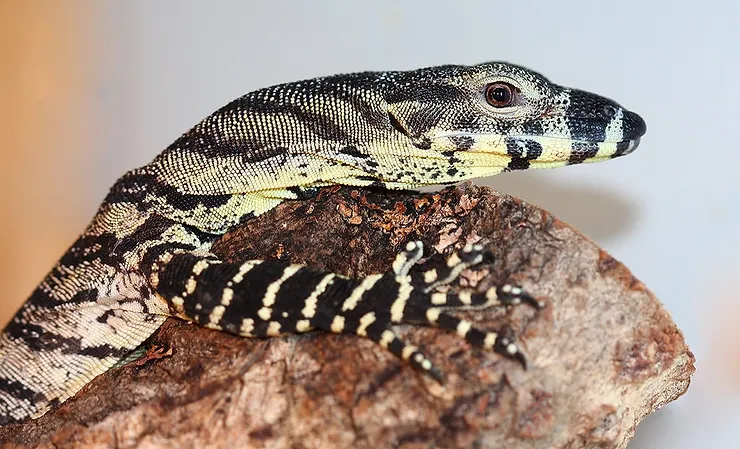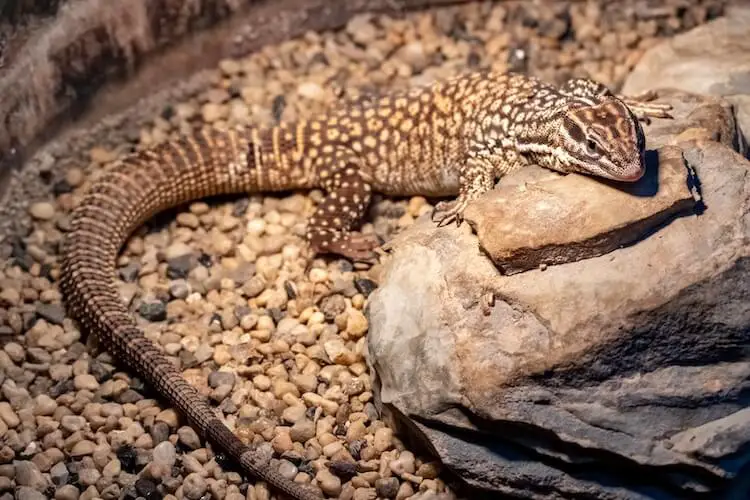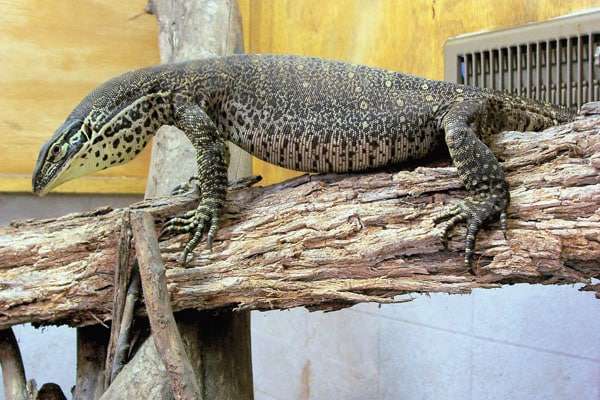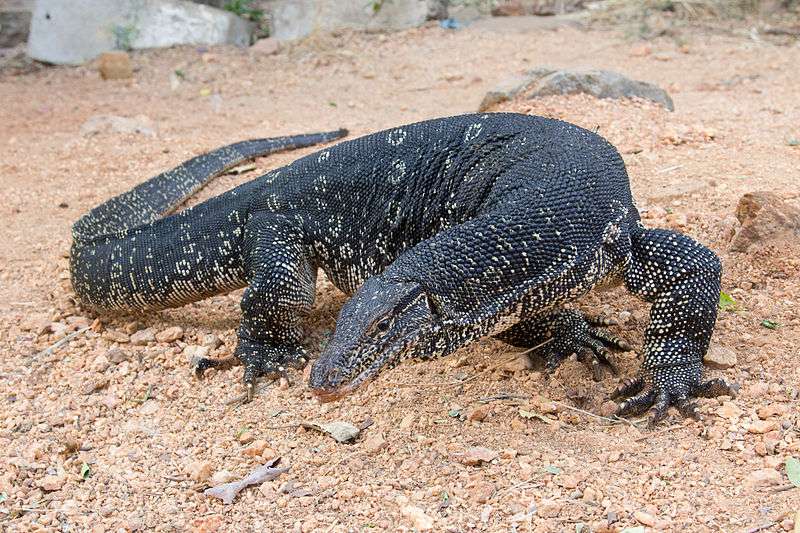
Description
Scientific name: Varanus varius
Life span: up to 40 years
Lace monitors are Australia’s second biggest monitor lizard and are among the world’s largest lizards. They may reach lengths of 2m and average 1.5m. Their tail, which may be twice as long as their body, makes up two-thirds of that length. They employ the length of their tail as a whip for defense, for balance while climbing, for diving, and for posture that rivals lace monitors.
There are two varieties of lace monitors. The dominant form is dark grey to dull blue-black with many, dispersed cream-colored dots. The snout is characterized by pronounced black and yellow stripes that continue beneath the neck and chin. The head is black. The tail features thin black and cream stripes that start out tiny and develop larger as they go closer to the tip. Bell’s form is the name of the other form. Its basic color is golden-brown or yellow, and from its shoulders to its tail, it is banded with wide, black, or brown stripes and fine black mottling.
Native Region/Habitat
They are distributed in eastern Australia, from Cape Bedford on the Cape York Peninsula to southeast South Australia. They graze over great distances and inhabit both open and confined woodlands.

Behavior
The lace monitor can climb well despite its weight and size. One was seen scaling a brick wall amid a rainstorm to find safety. Compared to adults, juvenile lace monitors are significantly more arboreal. They frequently reside in the same place for most of their adult life; one individual was discovered to have spent years in the same tree. The majority of lace monitors are carrion feeders, consuming other animals’ already-dead corpses as food. They eat insects, birds, reptiles, small mammals, and eggs. In the spring and early summer, juvenile birds and mammals make up a bigger portion of their diet.
When lace monitors are young, they are quite cautious of humans. It will take time and effort for them to learn to feel comfortable being handled. When handling lace monitors as adults, heavy, long gloves should be used since their sharp claws can inflict serious incisions. The easiest way to train young lace monitors is to leave them alone and gradually begin to engage with them by giving them food. The key to training your lace monitor is earning the monitor’s trust.
Care As a pet/In captivity
Hatchlings and juvenile monitors may live in small enclosures, but for adults, enclosures should be built as tall and as wide as possible given the available area. They enjoy climbing and find safety in height. There should be plenty of climbing and hiding-friendly logs and branches in the design of the cage. The hot side of the enclosure should be approximately 30° C, while the cool end should be about 27° C. A 5.0 reptilian UV globe should be given for around 8 hours each day in indoor enclosures as this aids in calcium absorption and the development of the bone structure. Provide a water dish that is both big enough for individuals to fully submerge themselves. A bath is necessary for shedding. Water bowls should be cleaned frequently since they serve as a drinking water source in addition to being used for bathing.
Table





